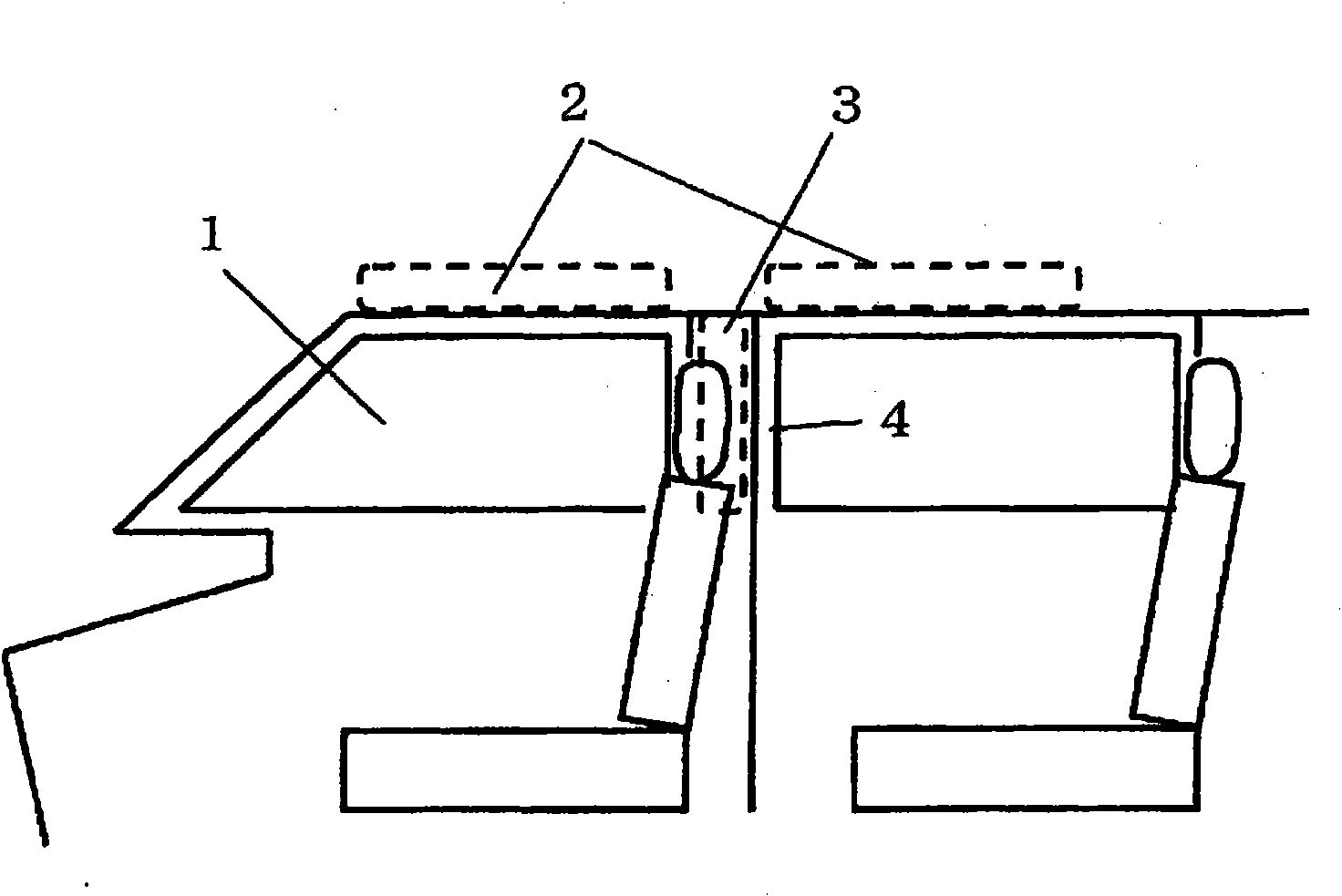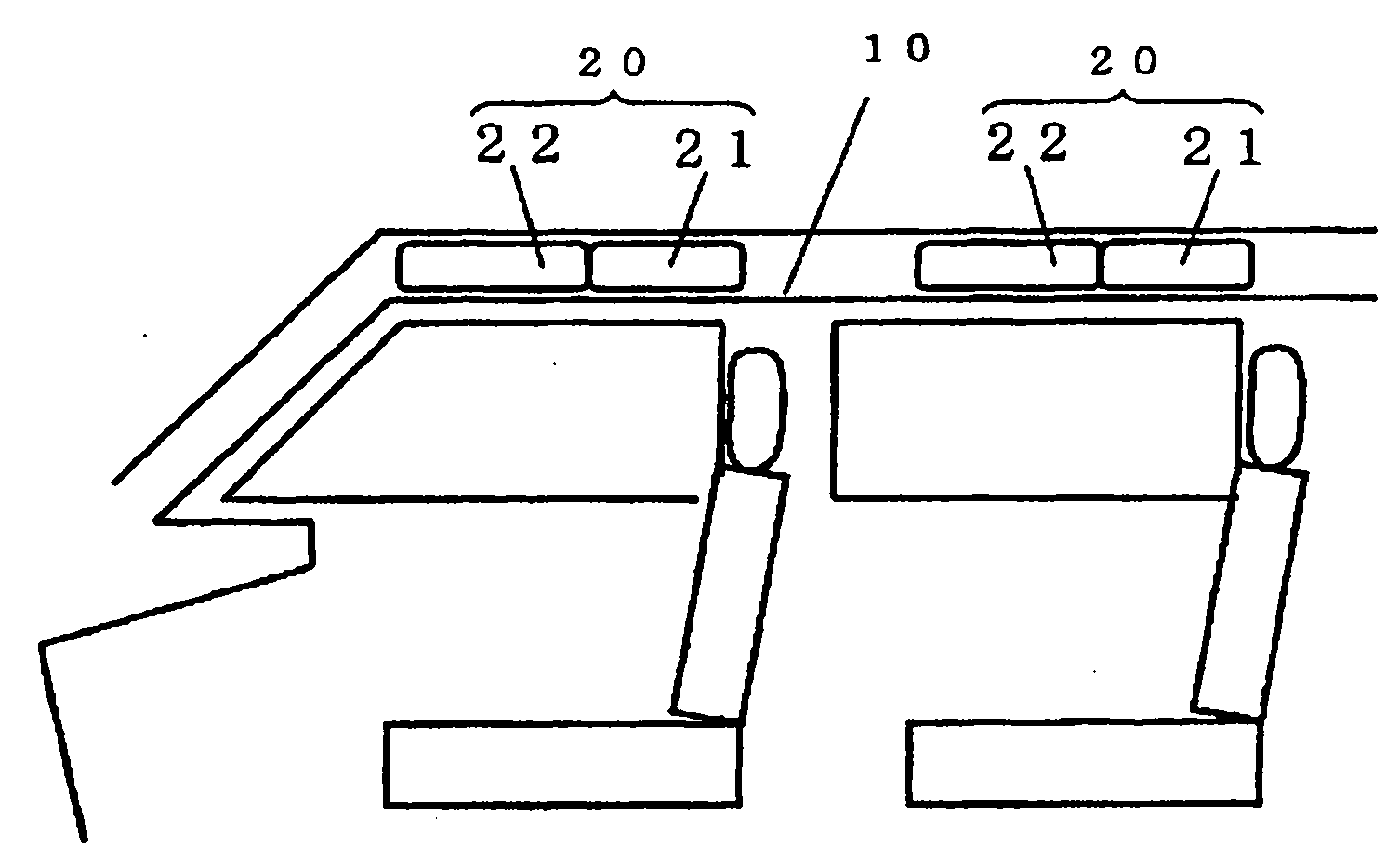Heating system for vehicle
A technology for heating devices and vehicles, applied in vehicle parts, transportation and packaging, heating/cooling equipment, etc., can solve problems such as inability to heat and cold arms, and achieve the effects of eliminating discomfort, comfortable heating, and eliminating radiant heat.
- Summary
- Abstract
- Description
- Claims
- Application Information
AI Technical Summary
Problems solved by technology
Method used
Image
Examples
no. 1 approach
[0022] refer to figure 1 , figure 2 , the first embodiment of the present invention will be described.
[0023] figure 1 It is an external view of the vehicle heater according to the first embodiment of the present invention. In the figure, a planar heating element 2 is arranged above a side glass 1 . The planar heating element 2 is arranged such that the heating surface faces the upper body from the head to the shoulders of the occupant sitting on the seat.
[0024] According to the above structure, such as figure 2 As shown, when the planar heating element 2 is energized, radiant heat can be used to heat the upper body of the front seat occupant. In particular, radiant heating as described above is effective during severe winters because the head is uncovered and exposed.
[0025] In addition, it is also possible to configure the disposition area of the planar heating element 2 from the passenger's head to be arranged above the side glass 1, since the planar heatin...
no. 2 approach
[0029] refer to figure 1 , figure 2 , the second embodiment of the present invention will be described.
[0030] figure 1 It is an external view of the vehicle heater according to the first embodiment of the present invention. In the figure, the planar heating element 3 is disposed on the central column portion 4 . The planar heating element 3 is arranged such that the heating surface faces the upper body from the head to the shoulders of the occupant sitting on the seat.
[0031] According to the above structure, such as figure 2 As shown, when the planar heating element 3 is energized, the upper body of the front seat occupant can be heated by radiant heat.
[0032] In addition, the planar heating element may be disposed on the side pillar portion of the rear seat so that the upper body of the rear seat occupant can be heated.
[0033] In addition, a planar heating element may be disposed above the side glass 1 and the center pillar 4 so as to face the occupant's upp...
no. 3 approach
[0042] refer to image 3 , Figure 4 , the third embodiment of the present invention will be described.
[0043] image 3 It is an external view of a vehicle heater according to a third embodiment of the present invention. In the figure, a planar heating element 20 is arranged on the top surface 10 . The planar heating element 2 is arranged such that the heating surface faces the portion from the head to the shoulders of the occupant sitting on the seat, and to the arms during driving.
[0044] According to the above structure, such as Figure 4 As shown, when the planar heating element 20 is energized, radiant heat can be used to heat the front seat occupant from the head to the shoulders, and to the arms during driving. In particular, radiant heating as described above is effective during severe winters because the head is uncovered and exposed.
[0045] In addition, when the temperature in the cabin is raised by heating, the radiant heat radiated to the head will cause ...
PUM
 Login to View More
Login to View More Abstract
Description
Claims
Application Information
 Login to View More
Login to View More - R&D
- Intellectual Property
- Life Sciences
- Materials
- Tech Scout
- Unparalleled Data Quality
- Higher Quality Content
- 60% Fewer Hallucinations
Browse by: Latest US Patents, China's latest patents, Technical Efficacy Thesaurus, Application Domain, Technology Topic, Popular Technical Reports.
© 2025 PatSnap. All rights reserved.Legal|Privacy policy|Modern Slavery Act Transparency Statement|Sitemap|About US| Contact US: help@patsnap.com



